

What are the Benefits of Studying Abroad?
The global education landscape is booming. As of 2023, UNESCO reports over 6 million international students enrolled in tertiary education worldwide—a testament to the growing appeal of studying abroad.
According to the Open Doors Report, the US is the top destination for Indian students, hosting almost 270,000 students in the 2022-2023 academic year.
African students, especially from Nigeria, Kenya, and Ghana, are flocking to Canada, which, according to Statistics Canada, welcomed over 50,000 African learners in 2022.
Meanwhile, Australia’s student-friendly policies and Europe’s affordable options—like Germany’s tuition-free universities and France’s cultural allure—draw diverse talent.
Whether you think about the American research opportunities, Canada’s immigration pathways, or Europe’s cost-effective education, you may consult experienced study abroad consultants to align your academic ambitions, budget, and career goals with the right destination.
As reports unveil, the international education market will hit $300 billion in 2024, reflecting the stakes and opportunities. With proper and professional guidance, you do not just choose a country but build a future.
How to Pick the Best Study Destination?
Choosing where to study abroad depends on multiple factors, including cost of living, education quality, job prospects, and cultural compatibility.
Tuition in the US can soar to $60,000 annually, while Canada averages $20,000-$35,000, and Germany offers free education at public universities.
Living costs vary too—$1,200/month in Sydney versus €850 in Berlin. Job opportunities post-study are critical: Canada’s 3-year work permit contrasts with the US’s 1-year OPT for non-STEM graduates.
Cultural fit also matters for international students. Some thrive in Australia’s laid-back vibe, while others prefer the UK’s academic rigor.
Here is a snapshot of the top destinations for most Indian and African students:
- The US: STEM powerhouse, with 60% of Indian students enrolled in tech fields.
- The UK: One-year master’s programs and a 2-year post-study work visa attract 130,000+ Indian students yearly.
- Canada: Affordable fees and Permanent Residency (PR) pathways draw 50% of African students.
- Australia: Work rights (20 hours/week) and scholarships lure over 100,000 Indian students.
- Germany: No tuition fees and engineering excellence appeal to cost-conscious learners.
An experienced study consultant simplifies this maze for you. They can analyze your profile—grades, interests, finances—and match you to a perfect destination.
For instance, a Kenyan student eyeing affordable tech education might be steered to Germany. At the same time, an Indian MBA aspirant could target the UK.
How to Use Financial Support to Study Abroad?
Financing an international education is a daunting challenge for students from India, Africa, and similar regions.
However, tuition fees vary widely. Take a look at these instances:
- $20,000-$60,000 annually in the US,
- $15,000-$35,000 in Canada and Australia,
- and often zero in Germany’s public universities.
Living costs also increase the burden for everyone. International students should consider $1,000/month in Toronto or €900 in Munich for these expenses.
Fortunately, scholarships and education loans offer practical solutions. Some fully funded scholarships cover all tuition, living expenses, and travel costs.
A professional study abroad consultant can transform this financial puzzle into a manageable plan, guiding you to funding options according to your needs.
This article section explores scholarships and loans, spotlighting opportunities for Indian and African students aiming for the US, Canada, Australia, and Europe.
Scholarships
Scholarships are a lifeline for international students, easing the cost of studying abroad. These are the main types of scholarships you may consider:
- Merit-based: Reward academic, athletic, or artistic excellence.
- Need-based: Support economically disadvantaged students.
- Country-specific: Government-funded, like Australia Awards.
- University-specific: Grants from institutions, often $5,000-$20,000.
These are some popular options among Indian students—each a gateway to world-class education:
- Fulbright-Nehru Master’s Fellowships: They cover tuition, living expenses, and travel to pursue education in American universities.
- The Inlaks Shivdasani Scholarship: The Inlaks Shivdasani Foundation provides an excellent opportunity for Indian students pursuing full-time Master’s, M.Phil, or Doctoral courses in the UK.
- Aga Khan Foundation International Scholarship Program: They provide scholarships to outstanding students from developing countries for postgraduate studies.
For more scholarships for Indian applicants, check out this guide.
And these are some options, especially for African students:
- Rotary Peace Fellowships: They award up to 130 fully funded fellowships annually.
- Australia Awards Scholarships: They support African applicants pursuing undergraduate and postgraduate studies.
- Mastercard Foundation Scholars Program: In 2023, it aided 3,000+ students globally in the US, Canada, and Europe.
Check this guide out for a list of scholarships for African students.
Do you have any questions about scholarships and fellowships? Talk to our consultants for more information.
Education Loans
When scholarships fall short, an education loan bridges the gap. There are two main types of education loans:
- Secured Loans: Require collateral (e.g., property) and lower rates (~9%).
- Unsecured Loans: No collateral, higher rates (~12-14%).
In India, banks like SBI (Global Ed-Vantage), HDFC Credila, and Axis Bank offer loans up to ₹1.5 crore (~$180,000) at 9-12% interest, with repayment starting six months after the course.
African students tap local options like Zenith Bank (Nigeria) or global lenders like Prodigy Finance, which disbursed $1 billion in 2024, 40% to Indian and African learners, sans collateral.
Digital lending platforms also boosted approvals by 40% in 2023, making loans more accessible.
There are some alternatives for international students beyond loans, including:
- Part-time work: Earn $10-$20/hour in Canada or Australia (20 hours/week).
- Assistantships: Teaching or research roles, common in the US, pay $500-$2,000/month.
- Crowdfunding: Platforms like GoFundMe raised $50 million for students in 2024.
- Sponsorships: Family or corporate backing, often tax-deductible.
Combining these with scholarships for Indian students or African learners maximizes affordability. Consultants often suggest a hybrid approach—say, a $10,000 scholarship plus a ₹ $50 lakh loan—to cover costs while minimizing debt.

How to Apply for Studying Abroad?
You’ve chosen your dream destination and secured funding—now it’s time to craft the perfect application to seal the deal.
For Indian, African, and international students, university applications are a critical step in studying abroad. A single misstep, like a generic resume or a weak Statement of Purpose, can derail your chances.
Fear not! This section breaks down the essential documents and how to nail them, ensuring your application shines in the US, Canada, Australia, Europe, or beyond.
What are the Essential Application Documents?
Every university application demands a precise set of documents. The university uses these to evaluate applicants’ academic and personal strengths.
Checking for any missing or poorly prepared documents before sending the application is essential. Almost 65% of application denials in 2024 were due to incomplete submissions. Here’s what you need:
- Academic Transcripts: Certified records of your high school or undergraduate grades, often requiring translation into English for non-English systems. Indian students, for instance, may need to convert CGPA to a 4.0 scale for US universities.
- Standardized Test Scores: Think IELTS (6.5+), TOEFL (80+), GRE/GMAT for graduate programs, or SAT/ACT for undergrads. For example, UK MBAs often demand GMAT scores above 600. Check these articles on language tests for more information.
- Letters of Recommendation (LORs): Typically, 2-3 letters from professors or employers highlighting your academic or professional prowess. Most universities prefer digital submissions via platforms like Common App or UCAS.
- Statement of Purpose (SOP): A 500-1,000-word essay detailing your academic journey, career goals, and why you’re a perfect fit for the program and country.
- Resume/CV: A concise 1-2 page document summarizing your education, work experience, skills, and achievements, tailored to the program.
- Portfolio (if applicable): Essential for creative fields like architecture, design, or fine arts, showcasing your best work.
- Additional Documents: Proof of funds, a valid passport copy, or country-specific forms like the US’s I-20 or Australia’s Confirmation of Enrolment (CoE).
Each document is a piece of your story! A study abroad consultant can ensure they align with university expectations, boosting your odds by 20%.
How to Write a Winning Resume?
Your resume/CV is your professional handshake—a snapshot of your skills and achievements that must grab attention.
Unlike job applications, academic resumes focus on education and relevant experiences tailored to the program. Never use a generic CV for all your applications—70% of rejected applicants make that mistake!
An effective resume should include contact information, educational background, work experience, relevant skills, achievements, and extracurriculars. Keep it clean and professional—one page for undergrads, two for grads.
Match your resume to the program’s priorities. For instance, if you are applying for a US STEM master’s, highlight tech projects or internships; if you are targeting a UK MBA, try to emphasize leadership roles.
How to Write a Compelling Statement of Purpose?
The SOP is your chance to shine! It’s a personal narrative that ties your past to your future. Here’s how to craft one that stands out:
- Show your Purpose: Show how your motivation fits with the program. Answer questions like “Why this university?” and “Why this country?”
- Consider a Good Structure: Start with a brief personal background, then cover your academic journey, professional experience (if any), reasons for choosing the program/country, and long-term goals.
- Be Specific: Mention a professor’s research or a unique course (e.g., “Professor X’s AI lab at UBC aligns with my data science passion”).
- Stay Authentic: Avoid clichés like “I’ve always dreamed of studying abroad.”
- Keep it Concise: Stick to 500-1,000 words, per university guidelines.
Study abroad consultants often refine SOPs, ensuring clarity and impact. Their edits can lift approval rates by 25%! Consult with Abroadin experts to make these edits to your SOP and other related documents.
How to Craft Strong Letters of Recommendation?
LORs are your advocates, validating your skills through trusted voices. Weak or generic letters undermine 20% of applications. Here’s how to get them right:
- Choose the Best Recommenders: Pick professors or supervisors who know you well and can highlight specific strengths (e.g., a research mentor for STEM applicants).
- Provide Guidance: Share your resume, program details, and key achievements to help them write relevant, detailed letters.
- Follow the Format Guidelines: LORs are usually 300-500 words, submitted digitally or on letterhead, addressing your academic or professional potential.
Request LORs 2-3 months early to meet deadlines. Then, follow up politely through email to ensure timely submission.
How to Submit and Verify Documents?
Submitting documents sounds simple, but 25% of application delays in 2024 were due to incorrect formats or missing attestations! These are some tips on how to submit your application correctly and timely:
- Use the Submission Platforms: Use systems like Common App (US), UCAS (UK), or university portals (e.g., Uni-Assist for Germany).
- Translate your Documents: Non-English transcripts need certified translations; Indian students often attest via boards or embassies.
- Follow the Deadline: Check the official website of your destination universities for deadlines. For instance, fall 2026 applications typically have early (November-December) or regular (January-March) deadlines.
- Do Verification: Some universities require WES evaluation for credentials (common in Canada and the US), costing $100-$200.
A study abroad consultant streamlines this process, catching errors before they cost you. Ready to perfect your resume, SOP, or LORs? Use the Abroadin admission packages to boost your application success by 30%!
How to Get a Student Visa?
Securing a student visa is crucial for Indian, African, and other international students who want to study abroad.
Each destination—the US, Canada, Australia, or Europe—has unique requirements, timelines, and costs, making this process a labyrinth without proper guidance.
This section unpacks visa essentials for common destinations among international students, especially Indian and African applicants.
What are the Common Visa Requirements?
Every country’s student visa process demands precision. Here’s what you usually need:
- United States: An F1 Visa requires an I-20 form, proof of funds (e.g., scholarships or education loan documents), and a visa interview. The $185 SEVIS fee + $160 application fee; processing takes 3-5 weeks.
- Canada: The study permit requires a Letter of Acceptance, CAD 20,635 (2025 minimum funds), and a clean record—the cost is CAD 150; processing takes 6-12 weeks.
- Australia: A Subclass 500 visa requires a Confirmation of Enrolment (CoE), Genuine Temporary Entrant (GTE) statement, and health insurance (OSHC). The cost is AUD 710, and processing takes 4-8 weeks.
- Europe: Germany demands a blocked account (€11,208 for 2025), and France €615/month proof. The cost €60-80, and the processing time is 2-10 weeks.
Necessary documents include admission confirmation, financial proof, English tests (IELTS/TOEFL scores: 6.5+ or 80+), and often a Statement of Purpose (SOP).
For more information on student visas for Indian applicants, read this article.
What are the Common Visa Pitfalls?
Securing a student visa is a critical milestone for international students, but missteps can derail even the best-laid plans.
Understanding common pitfalls—and their solutions—can make the difference between approval and rejection. Here’s a deeper look at three frequent challenges and how to tackle them effectively.
- Incomplete Proof of Funds: One of the top reasons for visa denials is failing to demonstrate sufficient financial resources. Countries like Canada require CAD 20,635 (2025 rate), while Germany demands a blocked account with €11,208. Immigration officers need assurance that you can cover tuition and living costs without illegal work.
- Weak Evidence of Intent to Return: Visa officers often reject applications if they suspect you’ll overstay. Indian and Nigerian students, in particular, face scrutiny—rejection rates hit 20% in the US. Weak ties to home, like no job prospects or family commitments, raise red flags.
- Interview Nerves: The visa interview can be daunting, especially for US F-1 or UK Tier 4 applicants. Stumbling over answers or appearing unsure sinks 25% of cases.
Consider the above pitfalls and try to fix them beforehand so your student visa journey is smoother and safer. You can also read 22 common reasons for student visa rejection.

How Study Abroad Consultants Simplify Your Journey?
The study abroad maze—picking universities, securing scholarships, arranging an education loan, and obtaining a student visa—can overwhelm anyone.
Here comes the study abroad consultant, who can be an effective strategic partner. They often offer the following services:
- Tailored Counseling: Matching your grades, budget, and goals to ideal programs—say, engineering in Germany or business in Canada.
- Application Mastery: Crafting shiny SOPs and hitting deadlines (70% of rejections stem from errors, per EdTech Review 2024).
- Financial Expertise: Linking you to scholarships for Indian students (e.g., Ontario Graduate Scholarship, $15,000/year) or African learners (e.g., Australia Awards) and optimizing education loan terms.
- Visa Precision: Ensuring compliance to dodge delays or denials.
Picture this: A Mumbai student lands a Canadian master’s with a consultant’s help—securing a scholarship, an SBI loan, and a study permit in six months. Or a Kenyan student fast-tracks an Australian visa with expert GTE prep.
Study abroad consultants cut through red tape, saving time and stress! In 2023, 85% of consultant-assisted students met visa deadlines versus 60% of solo applicants.
Practical Tips and Trends of Student Visa
The study abroad surge is undeniable. India’s outbound education market will hit $100 billion by 2025, with 1.8 million students projected abroad.
Africa’s numbers grow 8% yearly, led by Nigeria and South Africa. The following are the most considered trends on this matter:
- STEM Rules: 60% of Indian and African students chase science and tech (IIE, 2024).
- Scholarship Rush: Applications jumped 25% in 2024, intensifying competition.
- Loan Boom: Digital platforms have boosted education loan approvals by 40% since 2022 (RBI).
Without a study abroad consultant, risks mount—30% miss deadlines, and 25% face visa rejections. Here are some practical tips:
- Plan Ahead: Start 12-18 months early for universities, scholarships, and loans.
- Prioritize Smart: Opt for Canada’s 3-year work permit or Germany’s free tuition.
- Trust Experts: Pick a consultant with proven success—check testimonials.
- Fund Wisely: Blend scholarships for Indian students with loans.
- Ace Visas: Mock interviews build confidence for US or UK scrutiny.
In 2024, consultant-led students were 20% more likely to enroll on time (ICEF). Leverage their know-how to turn trends into triumphs.
How to Prepare for Studying Abroad?
Stepping into life abroad is exhilarating yet demanding for Indian, African, and international students.
Practical preparation is key beyond securing a student visa or funding via scholarships and an education loan.
From finding a place to live to adapting culturally and meeting academic standards, this phase shapes your success.
An experienced study abroad consultant often extends support here, ensuring you’re ready for the US, Canada, Australia, or Europe.
Let’s see how to settle for studying abroad, and having a life-changing experience while living in another country.
Settling In: Housing, Budgeting, and Cultural Fit
Your first task abroad is finding a home. Options vary here, including:
- University Dorms: They are the most convenient options, and expenses vary from $500 to $1,500/month for international students in the US. It is also a good way to network.
- Shared Apartments: They are cost-effective, and expenses are $400-$1,000/month in Australia or €300-€600 in Germany.
- Homestays are the best option for those pursuing cultural immersion. In the UK, they cost $600-$1,200/month, often with meals included.
Next is managing expenses. Living costs—$1,200/month in Sydney, €900 in Berlin—add up fast. For more information on costs for international students, read guides on student budget in our blog.
These are some practical budgeting and living abroad tips from the guides mentioned above:
- Use student discounts (e.g., 20% off transit in Canada).
- Work part-time—up to 20 hours/week in Australia ($15-$25/hour) or Canada (CAD 16/hour).
- Cultural adaptation can be tricky. Language barriers (even with IELTS 6.5) challenge 40% of Indian students in the US.
- Join student clubs—over 80% of universities offer them the opportunity to build networks. Mental health matters, too; 25% of international students report stress.
- Seek university counseling—free at 90% of Canadian schools. A study abroad consultant prepares you for these shifts, from accommodation searches to cultural workshops, easing your transition.
- Academic life demands adjustment. US grading (A-F) differs from India’s percentages, and plagiarism penalties are strict—30% of cases involve internationals.
- Expect coursework-heavy systems in Australia versus research focus in Germany. Consultants brief you on these norms, ensuring you’re academically ready.
Building Your Career: Work Options and Post-Study Pathways
Studying abroad isn’t just about degrees—it’s a career launchpad. While studying, internships abound:
- 70% of US STEM students secure them via OPT, paying $15-$30/hour.
- Canada allows 20-hour/week jobs—retail to research assistantships—adding CAD 1,000/month.
- Australia’s work rights match, with 60% of Indian students employed part-time.
Post-study work visas open doors:
- The US: Optional Practical Training (OPT)—1 year, 3 for STEM—leads to H-1B (65,000 caps, 2025).
- The UK: Graduate Route offers 2 years; 50,000+ Indian students stayed in 2023.
- Canada: Post-Graduation Work Permit (PGWP)—up to 3 years—saw 80% of African graduates apply.
- Australia: Temporary Graduate Visa FOR 2-4 years—benefits 40% of Indian grads.
- Germany: 18-month Job Seeker Visa; 90% of engineering grads find jobs. For more information about finding a job after graduation, read this article.
Consultants can align your program with these prospects—e.g., nursing in Canada for PR or IT in the US for OPT. Interestingly, consultant-guided students were 25% more likely to secure post-study work in 2023!
Conclusion
For Indian, African, and international students, studying abroad in the US, Canada, Australia, or Europe unlocks elite education and global careers. Yet, financial hurdles, visa complexities, and life adjustments loom large. Partnering with a study abroad consultant transforms these challenges into opportunities—unlocking scholarships, securing an education loan, and nailing your student visa. Data proves it: expert help boosts success by 20-30% across applications, funding, and visas. Consult with Abroadin experts today!

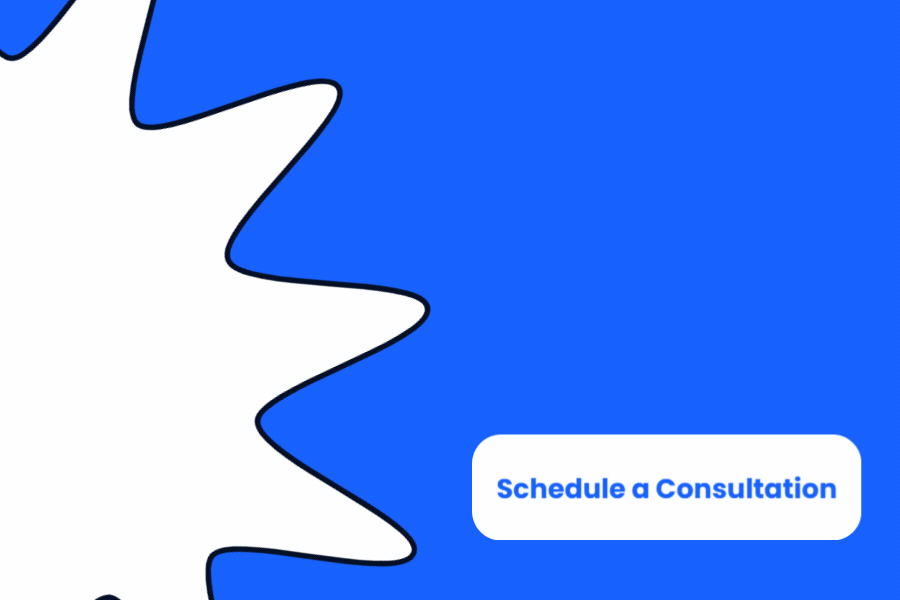
How useful was this post?
Click on a star to rate it!
Average rating 5 / 5. Vote count: 3
No votes so far! Be the first to rate this post.

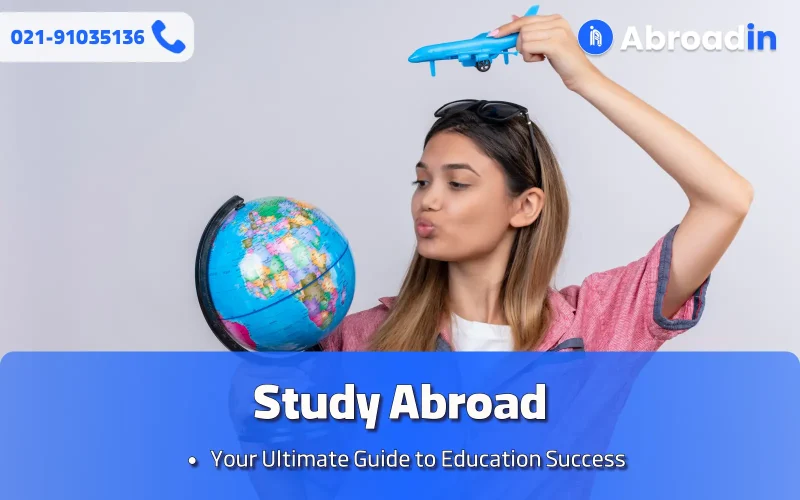
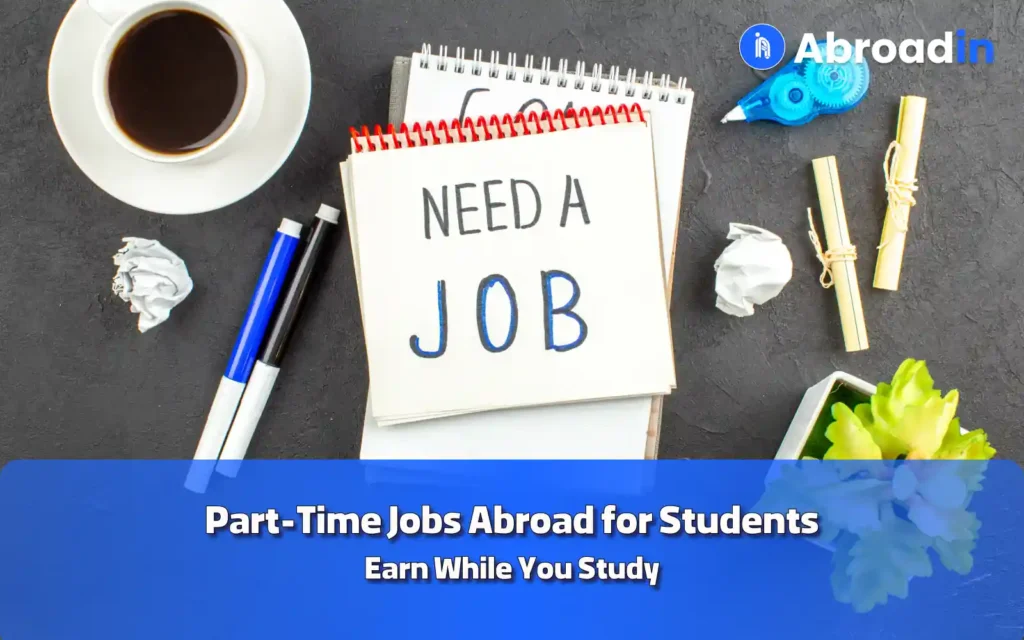
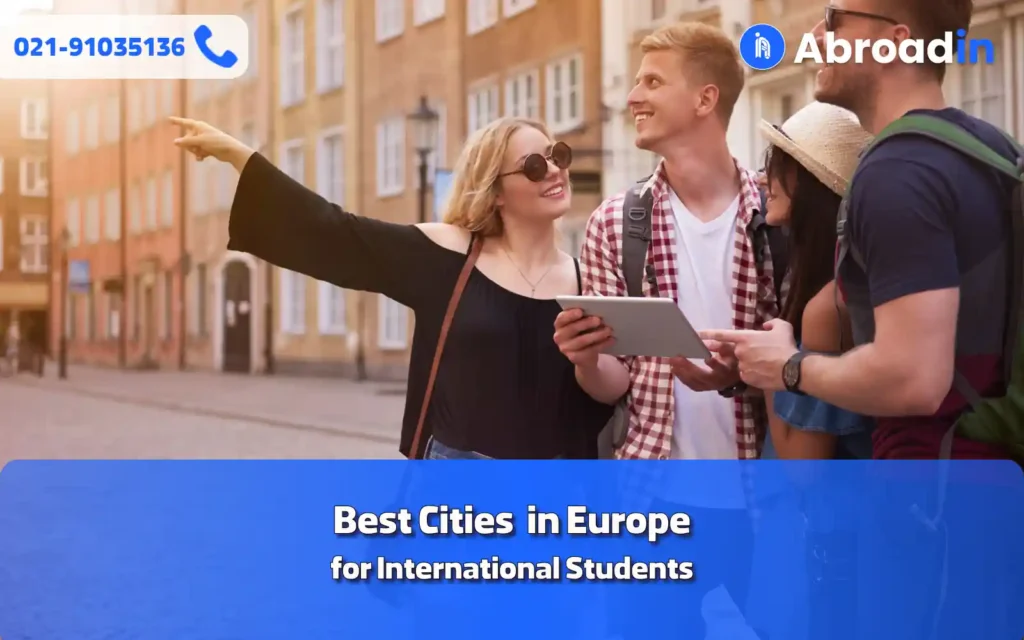


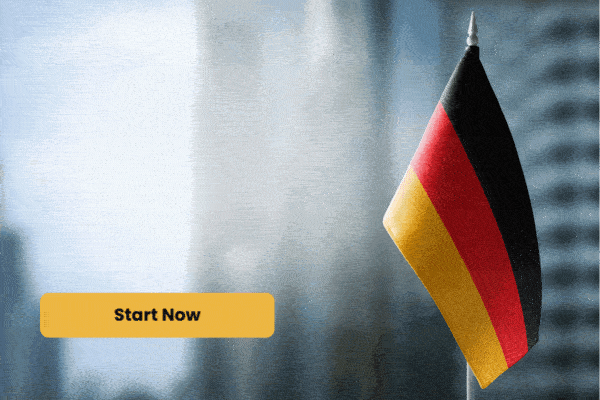
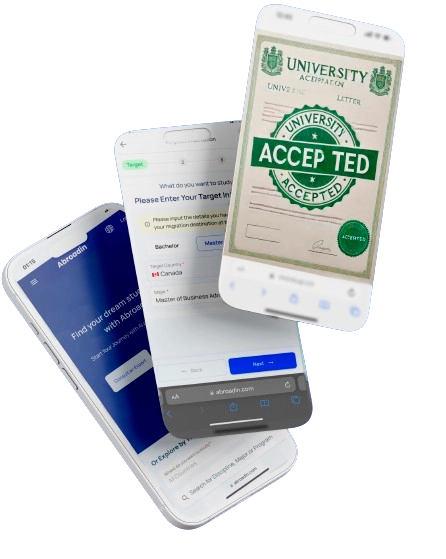
No comment yet, add your voice below!